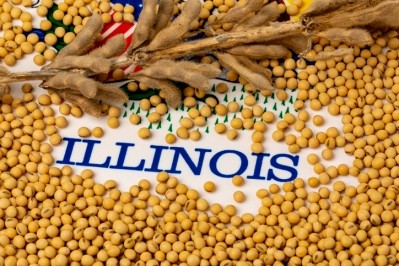What could hot temperatures mean for European corn crops?

Historically, elevated temperatures have been associated with reduced corn yields, particularly during the critical yield-forming stages of crop growth, reports Gabriel Odiase, analyst, cereals, and oilseeds, AHDB.
Last week, the EU crop monitoring service, MARS, reported that unusually hot temperatures, often exceeding 35°C, coupled with minimal rainfall, have severely impacted summer crops during their flowering phase. Consequently, MARS has revised its corn yield forecast for the EU-27 2024 harvest to 7.24 t/ha, down from the 7.55 t/ha estimated in June.
Ukraine is experiencing one of its warmest periods on record, with dry conditions persisting in the south since mid-June. Consultancy firm, ASAP Agri, has reduced its forecast for the 2024 Ukrainian corn harvest by 5.0 Mt, bringing it to 24.1 Mt.
In Russia, similar hot and dry conditions have adversely affected corn crop development, reads Odiase's analysis.
"Agricultural consultancy firm, SovEcon, has lowered its 2024 production estimate for Russia by 1.2 Mt, now standing at 13.4 Mt due to the persistent dry and hot weather in the southern regions."
Other Eastern European countries, including Bulgaria, Hungary, and Romania, have also seen reductions in yield forecasts, according to last week’s MARS report. Yield estimates were lowered by 15% in Bulgaria, 14% in Hungary, and 10% in Romania compared to June's forecasts.
Weather forecasts predict the continuation of hot and dry conditions in key growing areas, increasing the likelihood of further reductions in yield predictions, according to Odiase.
Implications for global grain prices
This season, EU-27 corn production is projected to reach 62.87 Mt. Although this represents a 0.3% increase from the previous year, it remains 3.7% below the five-year average. With the forecast indicating more unfavorable weather ahead, additional reductions in yield are possible.
The EU's ongoing hot and dry weather could significantly impact global supply.
However, current favorable crop conditions in the US, along with a projected rise in global ending stocks, have kept corn prices stable for now, says the AHDB analyst.
Given the tight wheat outlook this season, some feed demand is expected to shift towards maize. Consequently, fluctuations in global corn prices are likely to influence wheat prices. Therefore, any further revisions to the EU corn crop forecast could potentially support corn prices, which might also affect domestic wheat price trends, comments Odiase.
















